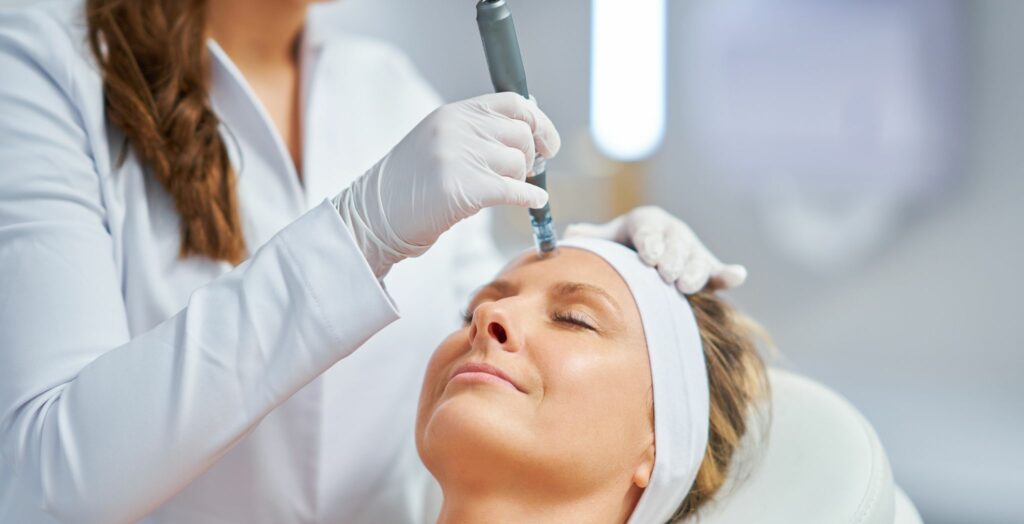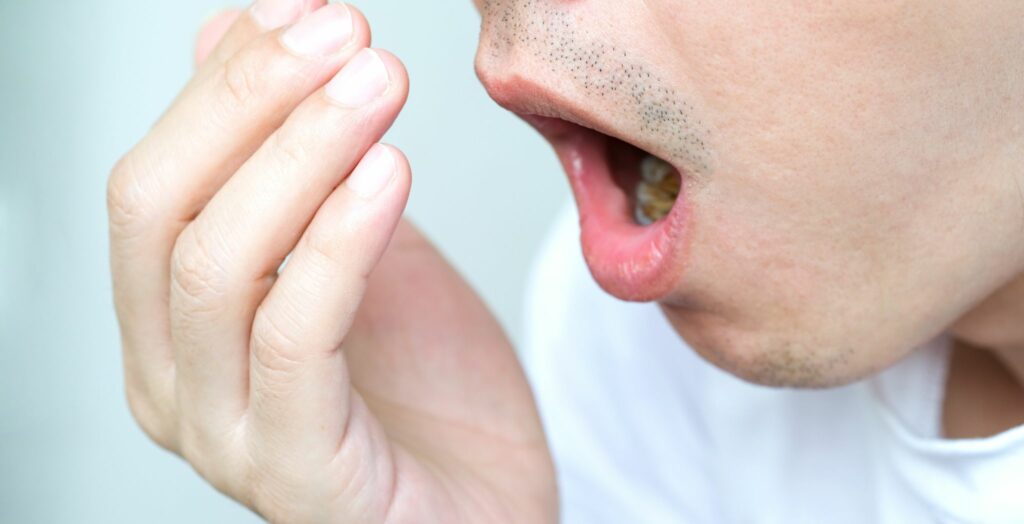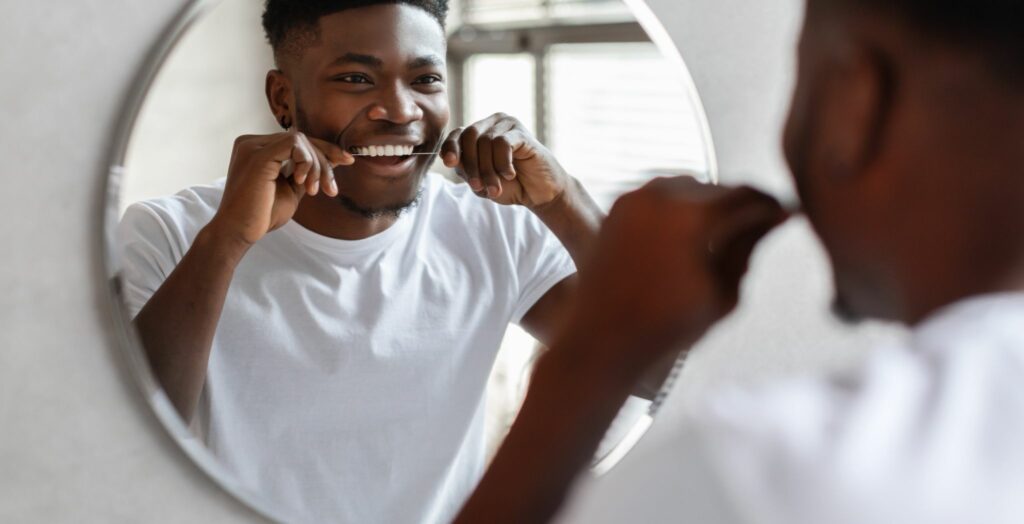Do you snore loudly? Do you often feel tired even after a full night’s sleep? You might have something called sleep apnoea. It’s a common problem, but many people don’t know they have it. The good news is that getting a sleep apnoea test is the first step to feeling much better.
In this blog, we’ll talk about everything you need to know about getting a sleep apnoea test. We’ll explain what sleep apnoea is, who should get tested, and what happens during the test. We’ll also cover how to get a referral and what your test results mean. By the end, you’ll have a clear idea of how to take control of your sleep and health.
What Is Sleep Apnoea?
Let’s start with the basics. What exactly is sleep apnoea?
Imagine you’re sleeping peacefully. With sleep apnoea, your breathing stops or becomes very shallow many times during the night. These pauses can last for a few seconds or even a minute or more. Your brain eventually senses that you’re not getting enough air, and it briefly wakes you up so you can start breathing again. This often happens without you even knowing it!
There are a few types of sleep apnoea, but the most common one is called Obstructive Sleep Apnoea (OSA). With OSA, something blocks your airway while you sleep. This could be your tongue falling back or the soft tissues at the back of your throat relaxing too much. Think of it like a kink in a garden hose – the air can’t get through easily.
Because your breathing keeps stopping and starting, your body and brain don’t get the deep, restful sleep they need. This is why people with sleep apnoea often feel tired and sleepy during the day, even if they think they’ve slept enough.
Some common signs of sleep apnoea include:
- Loud snoring: This is often the first thing a partner notices.
- Waking up gasping or choking: You might feel like you’ve stopped breathing.
- Daytime sleepiness: You might feel tired even after a full night’s sleep or fall asleep easily during the day.
- Morning headaches: Lack of oxygen can lead to headaches.
- Trouble concentrating or memory problems: Being tired affects your brain.
- Irritability: Constant tiredness can make you grumpy.
- High blood pressure: Sleep apnoea is linked to heart problems.
If these sound familiar, it’s a good idea to talk to your doctor about a Sleep Apnoea Test.
Who Should Get a Sleep Apnoea Test?
If you have any of the symptoms we just talked about, especially loud snoring or daytime sleepiness, you should definitely consider getting a Sleep Apnoea Test. It’s important because sleep apnoea isn’t just about feeling tired; it can also affect your overall health.
Think about these questions:
- Do you snore loudly, especially if your snoring is very disruptive to others?
- Has anyone told you that you stop breathing while you sleep?
- Do you often wake up gasping for air or feeling choked?
- Do you feel very tired and sleepy during the day, even after what seems like enough sleep? Do you find yourself falling asleep at work, while watching TV, or even while driving?
- Do you have morning headaches?
- Are you overweight or obese? This is a common risk factor for sleep apnoea.
- Do you have high blood pressure or other heart problems?
- Do you have a large neck circumference?
- Is sleep apnoea common in your family?
If you answered “yes” to several of these, it’s a strong sign that you might benefit from a Sleep Apnoea Diagnosis Process. Don’t ignore these signs! Getting tested can lead to treatments that will greatly improve your quality of life and protect your health.
Types of Sleep Apnoea Tests
There are a couple of main ways to get a sleep apnoea test. The best option for you will depend on your symptoms and what your doctor thinks is best.
- Polysomnography (PSG) – The In-Lab Sleep Study: This is often called the “gold standard” for diagnosing sleep apnoea. You go to a special sleep clinic, usually for one night. While you sleep, a team of experts monitors many things about your body.
- What it measures:
- Brain waves (EEG): To see your sleep stages (light, deep, REM sleep) and if you’re waking up.
- Eye movements (EOG): Also help identify sleep stages.
- Muscle activity (EMG): Checks for leg movements or teeth grinding.
- Heart rate (ECG): To see how your heart is doing.
- Breathing effort: How hard you’re trying to breathe.
- Airflow: If air is moving in and out of your nose and mouth.
- Blood oxygen levels (Oximetry): How much oxygen is in your blood?
- Snoring: They’ll record if you’re snoring and how loud.
- Body position: How your position affects your breathing.
- Pros: Very detailed information, can diagnose other sleep disorders besides sleep apnoea.
- Cons: You have to sleep away from home, might feel strange with all the wires, and it can be more expensive.
- What it measures:
- Home Sleep Apnoea Testing (HSAT): This is becoming more common because it’s convenient and often cheaper. Instead of going to a clinic, you get a small device to take home and use yourself.
- What it measures:
- Breathing effort
- Airflow
- Blood oxygen levels (Oximetry)
- Heart rate
- Snoring
- Some devices may also measure body position.
- Pros: You sleep in your bed, which can be more comfortable and natural. It’s generally less expensive.
- Cons: Not as comprehensive as an in-lab study, so it might miss some milder cases or other sleep disorders. It’s usually only used for diagnosing Obstructive Sleep Apnoea.
- What it measures:
Your doctor will help you decide which How to Get Tested for Sleep Apnoea option is right based on your symptoms, health history, and what’s available.
What Happens During a Sleep Apnoea Test?
Let’s break down what happens when you go for a Sleep Study for Snoring or other symptoms.
For an In-Lab Sleep Study (Polysomnography):
- Arrival: You’ll arrive at the sleep clinic in the evening, usually a few hours before your normal bedtime. You’ll be shown to a private room often set up like a comfortable bedroom.
- Getting Wired Up: A friendly technologist will explain everything to you. They will place sensors on different parts of your body. Don’t worry, it doesn’t hurt!
- Small sticky pads will be placed on your scalp (for brain waves), face (near your eyes and chin for muscle movement), and chest (for heart rate).
- A small clip will go on your finger or earlobe to measure oxygen levels.
- Belts will be placed around your chest and stomach to measure your breathing effort.
- A small sensor will be placed under your nose to measure airflow.
- Sometimes, a tiny microphone is placed near your throat to record snoring.
- Getting Comfortable: Once you’re all set up, you’ll have time to relax. You can read, watch TV, or just unwind before you try to sleep. The technologist will be in another room watching the monitors, but they can hear you and communicate if you need anything.
- Sleeping: You’ll try to sleep as normally as possible. It might feel a bit different with the wires, but most people get enough sleep for the test to be useful.
- Morning: In the morning, the technologist will gently wake you up and remove all the sensors. You can then go home and resume your normal activities.
For a Home Sleep Apnoea Testing:
- Picking Up the Device: Your doctor or a sleep service provider will give you a small, portable device. They’ll show you how to use it and attach the sensors correctly. It’s usually quite simple.
- At Home: You’ll take the device home and use it for one night while you sleep in your bed.
- Typically, you’ll attach a small sensor to your finger (for oxygen), a nasal cannula (thin tubes that go in your nostrils for airflow), and sometimes a belt around your chest or stomach.
- You’ll turn on the device as instructed before you go to sleep.
- Returning the Device: In the morning, you’ll turn off the device and return it to where you picked it up. The data stored on the device will then be downloaded and analysed.
No matter which type of test you have, the goal is to gather information about your breathing, oxygen levels, heart rate, and sleep patterns throughout the night. A sleep specialist then analyses this data.
How to Get a Sleep Test Referral
So, you think you might need a How to Get Tested for Sleep Apnoea? The first step is usually to talk to your family doctor, also known as your GP (General Practitioner).
Here’s how the process generally works:
- Book an Appointment with Your GP: Explain your symptoms clearly. Tell them about your snoring, daytime tiredness, waking up gasping, morning headaches, and any other concerns.
- It can be helpful to bring a list of your symptoms and how long you’ve had them.
- If you have a partner, ask them what they’ve noticed about your sleep, and maybe even bring them to the appointment to see if they can describe your snoring or breathing pauses.
- Your GP’s Assessment: Your GP will ask questions about your health, lifestyle, and medical history.
- They might do a physical exam, checking your throat, neck, and weight.
- They might also ask you to fill out a questionnaire, like the Epworth Sleepiness Scale, which helps measure how sleepy you are during the day.
- Getting a Referral: If your GP thinks you might have sleep apnoea, they will write you a referral. This referral is like a letter that tells another specialist (a sleep physician or a sleep clinic) that you need further investigation.
- Your GP will discuss with you whether an in-lab sleep study or a Home Sleep Apnoea Testing is more suitable for your situation. Sometimes, they might refer you directly to a clinic that offers both options.
It’s important to go through your GP first because they have a full picture of your health and can rule out other conditions that might be causing your symptoms. They can also make sure you get to the right specialist for your specific needs.
Understanding the Results
After you’ve had your Sleep Apnoea Test, a sleep specialist doctor will analyse the information gathered from the sensors. This usually takes a week or two. Once the analysis is complete, your doctor will discuss the results with you.
Here’s what they’ll be looking for:
- Apnoea-Hypopnoea Index (AHI): This is the most important number. It tells you how many times per hour, on average, your breathing stops (apnoea) or becomes very shallow (hypopnoea) during the night.
- AHI less than 5: Normal (no sleep apnoea).
- AHI between 5 and 15: Mild sleep apnoea.
- AHI between 15 and 30: Moderate sleep apnoea.
- AHI greater than 30: Severe sleep apnoea.
- Oxygen Saturation Levels: The test will show how much oxygen was in your blood throughout the night. People with sleep apnoea often have drops in their oxygen levels when their breathing stops. Low oxygen can put a strain on your heart and other organs.
- Sleep Stages: For an in-lab study, they’ll see how much time you spent in different sleep stages (light, deep, REM). Sleep apnoea often disrupts deep and REM sleep, which is crucial for feeling rested.
- Snoring and Arousals: They’ll also note how much you snored and how many times your brain briefly woke you up (called “arousals”) to restart your breathing. These arousals are why you feel tired even if you don’t remember waking up fully.
Based on these results, the sleep specialist will tell you if you have sleep apnoea, and if so, how severe it is. They will then discuss the best treatment options for you. Don’t be afraid to ask questions! Make sure you understand your diagnosis and what the next steps are.
Dental Solutions After Diagnosis
While CPAP (Continuous Positive Airway Pressure) therapy is a very common and effective treatment for sleep apnoea, especially for moderate to severe cases, it’s not the only option. For people with mild to moderate sleep apnoea, or those who can’t tolerate CPAP, dental solutions can be a great alternative.
This is where dentists, like your local dentist Cranebrook or dentist in penrith Dentists, can play a crucial role. They can provide a custom-made oral appliance called a Mandibular Advancement Device (MAD) or Mandibular Advancement Splint (MAS).
How does a MAD/MAS work? These devices are worn in your mouth while you sleep, similar to a mouthguard. They work by gently holding your lower jaw and tongue slightly forward. This helps to keep your airway open and prevents it from collapsing during sleep. By moving the jaw forward, it creates more space at the back of your throat, allowing air to flow freely.
Benefits of a MAD/MAS:
- Non-invasive: No masks or hoses, which some people find uncomfortable.
- Portable: Easy to travel with.
- Quiet: It doesn’t make noise like a CPAP machine.
- Effective for mild to moderate sleep apnoea: Can significantly reduce snoring and apnoea events.
- Custom-fit: Made specifically for your mouth, ensuring comfort and effectiveness.
Who can get a MAD/MAS? Your sleep specialist might recommend a MAD/MAS if:
- You have mild to moderate obstructive sleep apnoea.
- You snore loudly but don’t have severe sleep apnoea.
- You can’t tolerate CPAP therapy.
If a dental appliance is an option for you, your sleep specialist will refer you to a dentist who has special training in sleep medicine or oral appliance therapy. These dentists will take impressions of your teeth and jaw to create a device that fits you perfectly. They’ll also follow up with you to make sure the appliance is working well and make any necessary adjustments.
So, if you’ve been diagnosed with sleep apnoea and are exploring your treatment options, remember to ask your doctor about dental solutions and consider talking to your trusted dentist in penrith about how they can help you get a better night’s sleep.
Conclusion
Getting a Sleep Apnoea Test is a crucial step towards understanding and improving your sleep and overall health. Sleep apnoea is a serious condition that can leave you feeling exhausted, affect your daily life, and even lead to other health problems if left untreated.
Remember, the journey usually starts with a conversation with your GP. They can help you determine if a test is right for you and provide a referral for either an in-lab sleep study or a convenient Home Sleep Apnoea Testing. Once you have your diagnosis, you and your doctor can explore the best treatment options, whether it’s CPAP therapy or a custom-made dental appliance from your local Dentist Cranebrook.
Taking action on your sleep health means taking action on your entire well-being. Don’t let loud snoring or constant tiredness be your normal. A proper diagnosis and treatment can make a huge difference, leading to more energy, better concentration, improved mood, and a healthier heart.
Are you constantly tired? Does your partner complain about your snoring? Don’t wait to improve your sleep and your life!
Talk to your doctor today about getting a Sleep Apnoea Test.
If you’ve already been diagnosed with mild to moderate sleep apnoea or are looking for CPAP alternatives, contact our dentist in penrith today to learn more about custom-made oral appliances. We can help you find a comfortable and effective solution for a restful night’s sleep. Your journey to better sleep starts now!



